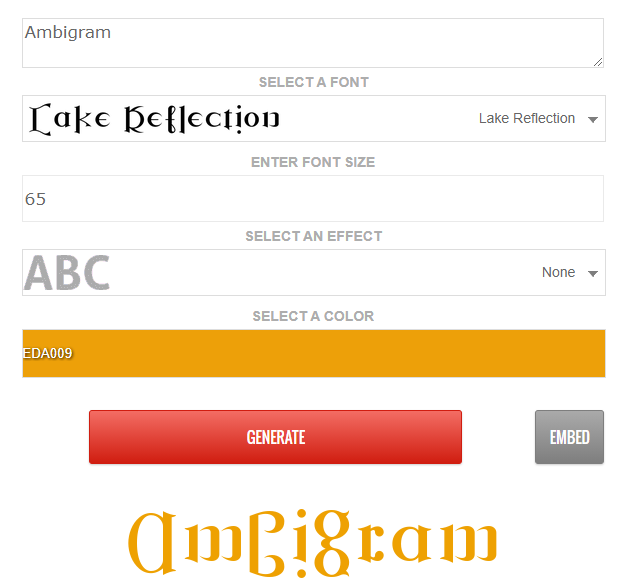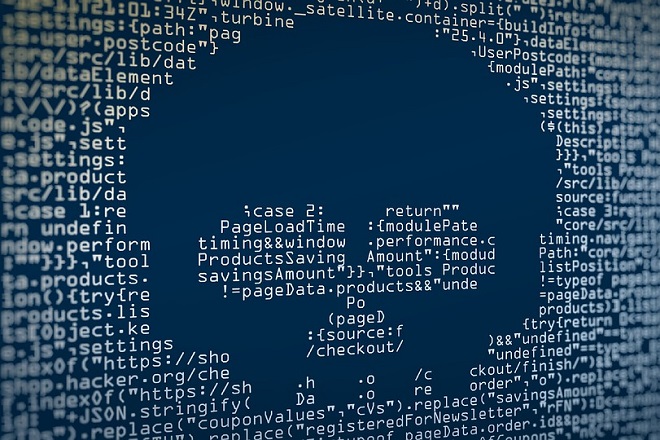Today’s society is progressively open to utilizing the advanced technology in the form of chatbots and virtual assistants in customer services, individual attention, and business processes. Though it may appear that they are almost identical devices, they work for different functions and are based on different principles. It is therefore very important for individuals and businesses interested in chatbot and virtual assistants to illustrating the major differences between them. This piece studies these two by outlining their features, their applications and the future of these technologies.

Introduction to Chatbots vs. Virtual Assistants
What Are Chatbots?
A chatbot may be referred to as ‘chat robot,’ and as the name suggests, is software that engages in a conversation with a human user in the most natural way it can, whether, through typed-text or an actual voice. The main purpose of a chatbot is to offer an immediate response to customers’ questions through a messaging channel, including Facebook, WhatsApp or the standalone application. Chatbots featuring NLP capabilities can understand the user’s input and return the necessary information so they are useful in responding to frequently asked questions or simple operations.
Also Read – Top 10 Best AI Chatbots (FREE & Paid)
What Are Virtual Assistants?
Virtual assistants are advanced forms of artificial intelligence applications that are expected to complete a wider array of tasks. Sometimes it is used in conjunction with other field of AI technology for instance; machine learning and voice recognition. Siri on iPhone and Apple Watch, Alexa on Amazon, and Google Assistant on Google Home and Android can execute various commands, organize your calendar, set or cancel meeting reminders, and also regulate smart devices inside homes. They are even more engaging and flexible than the latter ones, in their interactions with the user.
Chatbots vs. Virtual Assistants: Quick Comparison
Here’s a comparison highlighting the key differences between chatbots and virtual assistants:
| Feature | Chatbots | Virtual Assistants |
|---|---|---|
| Definition | Rule-based or AI-powered programs designed to simulate conversation. | AI-driven assistants that perform tasks and provide personalized assistance. |
| Functionality | Primarily handle basic queries, FAQs, and customer service tasks. | Can perform complex tasks, schedule appointments, set reminders, and interact with various applications. |
| AI Capability | Basic AI or rule-based responses with limited learning ability. | Advanced AI with NLP, contextual understanding, and learning capabilities. |
| Interactivity | Primarily text-based interactions (some support voice). | Support both text and voice interactions with advanced speech recognition. |
| Personalization | Limited personalization, mostly pre-scripted responses. | Highly personalized responses based on user behavior, history, and preferences. |
| Integration | Often integrated into websites, messaging apps, or customer service platforms. | Integrated into smart devices, operating systems, and various applications. |
| Examples | Customer service chatbots, FAQ bots, e-commerce bots (e.g., website chatbots). | Siri (Apple), Alexa (Amazon), Google Assistant, Cortana (Microsoft). |
| Usage | Used for customer support, lead generation, and basic interactions. | Used for productivity, smart home control, personal organization, and advanced assistance. |
| Learning Ability | Limited learning, often relies on pre-defined scripts. | Can learn from user interactions and improve responses over time. |
Chatbots vs. Virtual Assistants: Interaction Mode
Chatbots
Most of the chatbots rely on text-based interfaces but they are well-developed systems, which also include voice interfaces. They are usually employed on the web, in applications for informational exchange, instant messengers such as WhatsApp, Facebook Messenger, and Slack. The interaction is asynchronous mostly in a sequential manner, whereby the user enters a question or command and the computer styles the response in text.
Virtual Assistants
Virtual assistant interfaces, in return, are more complex and include voice, text and in some cases graphical interface. It is developed to take voice input, meaning that it is available for use through smart speakers, smartphones, and other devices through which people can interact with the virtual assistant. This multi-modal interaction results in the more natural and natural way of the interface.
Chatbots vs. Virtual Assistants: Complexity and Functionality
Chatbots
As for the complexity, it grew significantly and reaches various levels of sophistication. The basic forms of chatbots work on the basis of decision trees and keyword search while smart ones use the NLP and machine learning algorithm to understand the context of the question asked by the user. Nonetheless, its prospects are rather restrained as it is typically used for particular topics, questions, scheduling, or purchases.
Virtual Assistants
They are employed universally; it is easier to program a virtual assistant to perform numerous tasks within different fields and areas. It is connected to multiple applications or devices, which are capable of completing the tasks of scheduling, emailing, playing music, and managing smart homes. the other factor that differentiates them is their capability of comprehending context and operating in different platforms to perform commands.
Chatbots vs. Virtual Assistants: Technical Foundations
Natural Language Processing (NLP)
Chatbots and virtual assistants in particular still use NLP to process the human language. However, different techniques of NLP are at different levels of sophistication. Chatbots employ keyword-based NLP to analyze and understand keywords and phrases in a sentence and virtual assists, on the other hand, critically use advanced NLP as well as machine learning tools to learn the context as well as intent of the conversation and the subtleties in language that may be subtle.
Machine Learning and AI
Along with artificial intelligence, machine learning is increasingly being used to improve the capabilities of both chatbots and virtual assistants. Chatbots incorporate artificial intelligence into their answering process to provide more specific and performant responses, as well as to accommodate longer communications with users. Virtual assistants use deep learning models that predict expected user behavior.
Chatbots vs. Virtual Assistants: Integration and APIs
Chatbots
Most chatbots are developed in a way that restrict them to work within certain platforms or applications hence no interactions with others. They employ APIs to interact with other systems such as for accessing customer information or to do transactions. However, their operations are normally limited to domain for which they were developed.
Virtual Assistants
It is designed to be compatible with any form of services and devices that are out there. It uses API in accessing different applications and you can be used for purposes such as calling or texting or operating smart gadgets. This extensive integration causes virtual assistants to act as the central point for all the interactions a user has.
Chatbots vs. Virtual Assistants: Development and Deployment
Chatbots
Chatbot creation in fact consists of the specification of what needs to be attained, the determination of how the conversation will occur and programming such things as the natural language processing algorithms. Software developers are capable of deploying chatbots from firms such as Dialogflow, Microsoft Bot Framework, and IBM Watson. The adoption involves a relative simplicity in terms of implementation since most of the chatbots are less complex to deploy.
Virtual Assistants
Building virtual assistants is a much more challenging process since it presupposes knowledge in the sphere of AI, NLP, and software engineering. To deliver great results for all devices, digital marketers have to come up with satisfactory and interactive models based on which they have to work within a technology stack, and on top of that, they have to align to various services. Services of creating virtual assistants are available on platforms such as Google Actions, Alexa Skills Kit or Apple’s SiriKit.
Chatbots vs. Virtual Assistants: Use Cases and Applications
Chatbots
Customer service is one of the leading applications of chatbots since they can address simple queries and offer instant solutions while the employees tackle the more complex cases. They are also used in e-business to help with making recommendations on products, order and sales.
In the health care sector, the application of chatbots is used simultaneously in consultation, appointment and to give mental health support. That is why chatbots can be helpful in answering frequently asked and frequent questions concerning health rapidly since they offer automated responses.
Virtual Assistants
Virtual assistants are suitable for both home and working environment. In personal use, for instance, they are used in setting reminders, enjoying music and checking on the weather among others. Users can manage various aspects of homes through the gadgets that are integrated with smart home devices.
At the workplace, virtual assistants come in handy, as they are capable of performing drudgery tasks like arranging meetings, sending emails, or clearing schedules. They can also be used to allow data inputs to be entered and outputs to be retrieved using only voice commands which is particularly advantageous in a situation where manual input/output is not desirable.
Chatbots vs. Virtual Assistants: Challenges and Limitations
Chatbots
The use of chatbots is quite common but they are faced with the following challenges. As for the cons it worth mentioning that such systems do not function freely and have limited answers as they are only based on such established scripts and answers leading to a bad experience if the question is not covered in their programming. Thereby, chatbots have a poor natural language understanding hence it becomes difficult for them to interpret some questions appropriately hence leading to frustration among the users.
One of the issues from the list above that is considered difficult to solve is how to maintain user engagement. Hence, the chatbot must be intelligent enough to respond instantly to the default line and at the same time it must not let the customer feel that he is talking to a robotic interface. Otherwise, such users may resort to interacting with the product or service instead of using it.
Virtual Assistants
Nonetheless, virtual assistants are relatively newer and also have some issues as well. Privacy is a key factor of concern since most of these assistants have to access one’s data and information to work properly. The privacy and proper usage of the user data is quite essential for the customers to continue using the service.
One weakness is the use of voice recognition system that may be hindered by external noise, regional dialect, or stammering. Developing voice recognition is still a problem that requires effort, as there are either false positives or false negatives.
The Future of Chatbots and Virtual Assistants
At the moment where the converse is also true because of artificial intelligence and machine learning in its use, it’s very bright as to where chatbots and virtual assistants are going. The advancements of these relative technologies indicate that it is possible for chatbots to improve their capability in recognition of the context and broader ability to handle larger queries. By extending its application with other humanities, for instance, computer vision and the feeling recognition, the chatbots will further enhance the functionality and efficiency of their interoperation.
AI based virtual assistant is the trend that will further advance as smarter and sophisticated that can perceive and perform more realistic and precise action based on the command received. The interaction between virtual assistants and other trends including AR and IoT will become possible and pave way for more human interactions.
One of the future trends is the blending of the two technologies, so the systems will contain the best features of chatbots and VA technologies. Virtual assistants will have the opportunity to provide the flexibility and the contextually aware interface while chatbots will have the opportunity to do explicit task solving. Such developments could lead to the creation of full-fledged digital assistants that reflect the needs of users in every possible way and are ready to fulfill them.
Conclusion
Chatbots and virtual assistants serve the purpose of enabling the user to interact with the technology, there are substantial differences in terms of the extent of provision of services, ways that a user can interact with them, their sensitivity to the context, and their interoperability. It has been seen that chatbots are utility-based, and perform well with pre-designed tasks in the textual format that are fit for handling normal customer services and automated procedures. Smart assistants have the advantage of being customizable and have an added interactive element in solving a variety of tasks and integrating with other systems.
With the further development of AI technology, the difference between chatbots and virtual assistants will become less noticeable, and the devices will be developed to be more effective. For businesses and individuals who want to incorporate AI to adapt to changes for the benefit of users, it is important to appreciate the merits and demerits of the mentioned technologies.






